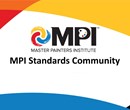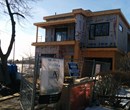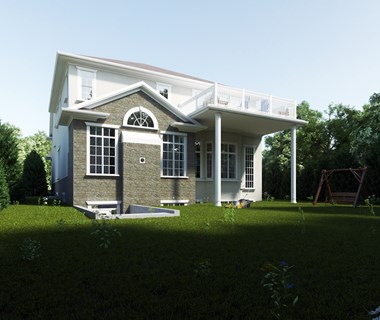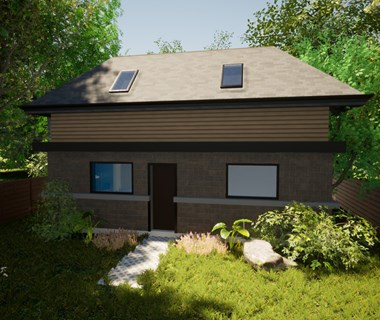The Cross-industry applications of Digital Twins.


Written by Brent Hughes
Digital twins have become increasingly popular in the field of architecture in recent years, and for good reason. A digital twin is a virtual representation of a physical asset, such as a building, that allows for real-time data collection and analysis. By using digital twins, architects are able to make more informed decisions, collaborate more effectively with team members, and visualize and communicate design ideas more clearly. In this blog post, we will discuss how digital twins can be utilized in architectural workflows through the use of tools like Revit and Twinmotion. We will also explore the potential for cross-industry applications of digital twins, specifically in the field of game design.
Benefits of using digital twins in architectural workflows
Using digital twins in architectural workflows offers numerous benefits. First and foremost, it increases efficiency in the design and decision-making process. Rather than relying on physical mock-ups or static 2D drawings, digital twins allow for real-time simulations and testing of various design options. This saves time and resources and allows architects to make more informed decisions about the best course of action.
Digital twins also enhance collaboration among team members, as they provide a shared platform for discussion and analysis. With a digital twin, all members of a project team can access and contribute to the same virtual model, rather than relying on multiple physical copies or disconnected communication channels.
In addition to improving collaboration, digital twins also allow for better visualization and communication of design ideas. 3D models and real-time simulations provide a more accurate and immersive representation of a project, which can be helpful for stakeholders and clients to understand and provide feedback on.
Finally, using digital twins leads to greater accuracy in project planning and execution. By continuously collecting and analyzing data from the physical asset, architects can make more informed predictions about the project's needs and outcomes. This can help mitigate potential issues and ensure the project stays on track.
Using Revit and Twinmotion in digital twin creation
Revit is a software tool that is commonly used in the architecture industry for building information modelling (BIM). It allows for the creation of detailed 3D models of buildings and the generation of construction documents. One of the key features of Revit is its ability to create digital twins of buildings. These digital twins can be used for a variety of purposes, including simulations, analysis, and collaboration.
To create a digital twin in Revit, an architect would start by creating a 3D model of the building using the software's various modelling tools. This model can include detailed information about the building's geometry, materials, and systems, as well as data about the project's schedule and budget. Once the model is complete, it can be used as a digital twin of the building.
Twinmotion is a real-time visualization tool that can be used to create high-quality 3D graphics and animations. It is particularly useful for creating immersive experiences of digital twins, as it allows for the creation of real-time visualizations that can be interacted with in a virtual environment.
By combining the capabilities of Revit and Twinmotion, architects can create detailed and accurate digital twins of buildings and use them to visualize and analyze various design options, as well as collaborate with team members and stakeholders. For example, an architect could use Revit to create a 3D model of a building and then use Twinmotion to create a real-time visualization of the model. This visualization could be used to walk through the building in a virtual environment, explore different design options, and share the experience with others.
Digital twins have the potential to be used in a variety of industries beyond architecture, including game design. In the game design process, digital twins can be used for level design and visualization, allowing for the creation of realistic and immersive game environments.
There are several examples of games that have utilized digital twins in their development. One well-known example is the open-world game "Grand Theft Auto V." The developers of the game used digital twins to create a highly detailed and realistic representation of the game's fictional city, Los Santos. By using digital twins, the game designers were able to plan and design the game's various levels, as well as make changes and updates more quickly.
In addition to "Grand Theft Auto V," there are many other games that have utilized digital twins in their development. For example, the racing game "Project CARS" used digital twins to create highly accurate representations of real-world race tracks. The sports game "FIFA 21" used digital twins to create realistic representations of various soccer stadiums.
The use of digital twins in game design has several benefits. First and foremost, it allows for a more efficient level of design and development. Instead of building physical prototypes or relying on 2D drawings, game designers can use digital twins to quickly test and iterate on different design options. Digital twins also allow for quicker updates and changes to be made to game levels, as the modifications can be made directly to the digital twin rather than requiring physical changes.
In addition to the benefits for game designers, the use of digital twins in game design also leads to a more realistic and immersive gaming experience for players. By using digital twins to create highly detailed and accurate game environments, players are able to feel like they are true "inside" the game world.
Conclusion
In conclusion, digital twins have the potential to greatly improve architectural workflows by increasing efficiency, enhancing collaboration, improving visualization and communication, and leading to greater accuracy in project planning and execution. The use of tools like Revit and Twinmotion allows architects to create and work with digital twins in a variety of ways, from simulations and analysis to collaboration and visualization.
In addition to their benefits in the field of architecture, digital twins also have the potential to be used in a variety of other industries, including game design. The use of digital twins in game design allows for more efficient level design and development, as well as quick updates and changes to game levels. It also leads to a more realistic and immersive gaming experience for players.
Overall, the use of digital twins is a powerful tool that is worth considering for a variety of industries. If you're interested in incorporating digital twins into your own workflows, consider exploring the capabilities of tools like Revit and Twinmotion.








